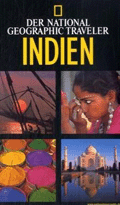Anzeige




Sie sind hier: Traumziele der Welt / Asien / Indien / Shimla
Shimla
Shimla ist die Hauptstadt des indischen Bundesstaates Himachal Pradesh in ungefähr 2.200 m Höhe. Die im Süden des Distrikts auf einem Bergrücken des mittleren Himalaya gelegene Stadt zählt rund 170.000 Einwohner. Der Name wurde nach der Hindu-Göttin Shyamala Devi, einer Reinkarnation der im Hinduismus verehrten Göttin Kali benannt.
Genießen Sie weitere Impressionen
Der Ort gehörte früher zum nepalesischen Königreich und hieß Shyamala. Er wurde 1819 von den Briten in Besitz genommen. Von 1834 bis 1939 zog die gesamte Regierung Britisch-Indiens (zuerst von Kolkata, später von New Delhi) in den Sommermonaten in die kühle Höhe Shimlas. Shimla wurde Teil einer Inszenierung britischer rassischer Überlegenheit: Bis zum Bau der Eisenbahn vollzog sich dieser Umzug als eine Karawane mit zweispännigen Tongas, die in acht Stunden die Fahrt durch die Hügellandschaft von Kalka nach Shimla zurücklegte. Seit 1903 ist der Ort mit der Kalka-Shimla-Strecke an das Eisenbahnnetz angeschlossen.
Traditionell blieb es während der britischen Kolonialzeit dem Vizekönig von Indien, dem britischen Oberbefehlshaber der Indischen Armee und dem Gouverneur des Panjab vorbehalten, in Shimla eine Kutsche, später ein Auto zu benutzen, während die übrige Kolonialgesellschaft Rikschas für den Personentransport und Ochsenkarren für den Gütertransport benutzte. Mit ihnen wurden die Luxusgüter für die Kolonialgesellschaft zu den legendären Banketten geschafft, um vornehme Bälle im Stil viktorianischer Gesellschaft zu feiern.
Shimla war 1914 Schauplatz der britisch-chinesisch-tibetischen Verhandlungen, die in der Shimla-Konvention über die Grenze zwischen Tibet und Britisch-Indien entlang der McMahon-Linie endeten.
Nach dem Bangladesch-Krieg 1971 unterzeichneten der pakistanische Staatspräsident Zulfikar Ali Bhutto und die indische Premierministerin Indira Gandhi hier das Shimla-Abkommen, in dem die Waffenstillstandslinie in Kaschmir zwischen Indien und Pakistan als „Line of Control“ festgeschrieben wurde.
The Mall
Die Hauptfußgängerzone The Mall liegt auf dem Grat und bietet eine gute Aussicht auf Stadt und den Himalaya. Bis zum Ersten Weltkrieg war The Mall für Inder verbotenes Terrain. Hier befanden sich Banken, Teesalons und Geschäfte der britischen Kolonialgesellschaft. Nach dem Zweiten Weltkrieg war es auch Indern erlaubt, The Mall zu betreten, vorausgesetzt, sie trugen keine indische Kleidung. Die Architektur Shimlas ist von Gebäuden im britischen Stil des 19. Jhs. geprägt. Ein achteckiger Musikpavillon aus dieser Zeit liegt an The Mall. Die zweitälteste protestantische Kirche Indiens, die Christ Church, liegt am östlichen Ende von The Mall; sie wurde von 1846 bis 1857 erbaut und verfügt über einen Tudor-Turm, dessen Glocken aus von den Briten erbeuteten Kanonen gegossen worden waren.
Auf dem höchsten Punkt der Stadt ist der Jakhu-Tempel gelegen, der dem Hindu-Gott Hanuman gewidmet ist.
weiter sehenswert sind:
- Christ Church
Situated on The Ridge, Christ Church is the second oldest church in Northern India. It has a very majestic appearance and inside there are stained glass windows which represent faith, hope, charity, fortitude, patience and humility. - Jakhu Hill: 2 km from Shimla, at a height of 8000 ft, Jakhu Hill is the highest peak an offers a beautiful view of the town and of the snow-covered Himalayas. At the top of the Hill, is an old temple of Lord Hanuman, which is also the home of countless playful monkeys waiting to be fed by all visitors. A 33 m statue of Lord Hanuman, a Hindu deity, at 2,591 m above sea level, is single statue to stand at the highest altitude among several other master pieces in the world, overtaking the Christ Redeemer in Rio de Janeiro, Brazil.
- Jutogh
Located just 8 km away from the city centre, this army cantonment is near Totu, an important suburb of Shimla city. - Shimla State Museum
The Museum, which was opened in 1974, has tried to protect hill-out and the cultural wealth of the state. There is a collection of miniature Pahari paintings, sculptures, bronzes wood-carvings and also costumes, textiles and jewellery of the region. - Indian Institute of Advanced Study
This institute is housed at the former Viceregal Lodge, built in 1884-88. - Summer Hill
Situated at a distance of 5 km from The Ridge is the lovely township of Summer Hill, at a height of 6,500 ft on the Shimla-Kalka railway line. Mahatma Gandhi lived in these quiet surroundings during his visits to Shimla. Himachal Pradesh University is situated here. - Annandale
Developed as the playground of Shimla, Annandale is 2–4 km from The Ridge at a height of 6,117 ft. It is a very big beautiful ground, but not meant for playing as it comes under the Indian Army. - Tara Devi
11 km from the Shimla bus-stand. Tara Devi hill has a temple dedicated to the goddess of stars on top of the hill. There is a military Dairy Town here as well as the headquarters of Bharat Scouts and Guides. - Sankat Mochan
A very famous Lord Hanuman temple is located here. - Junga
Junga is near Tehsi, 26 km from Shimla. Its original name (with diacritics) is Jūnga and is a former royal retreat of the princely state of Keonthal. It is also known as the Keonthal Estate. - Anand Vilas
Midway between Shimla and Junga. "Sarva Dharma Mandir", Temple of all Faiths, is a spiritual group dedicated to Mother Nature. Thousands of visitors and devotees come here every year. There is an "Art is Values" school with students from all over India. Classes are provided free of cost. - Totu: A major developing suburb of Shimla on NH-88. Houses Jutogh railway station & HimFed under Govt. of Himachal Pradesh.
- Mashobra: 13 km from Shimla, site of the annual Sipi fair in June.
- Kufri
16 km from Shimla at a height of 8,600 ft, Kufri is the local winter sports centre, and it also has a small zoo. - Chharabra: 13 km from Shimla on route to Kufri.
- Naldehra
22 km from Shimla, with a nine-hole Naldehra Golf Club. The annual Sipi fair in June is held in Naldehra. - Chail
Chail was built as summer retreat by the Maharaja of Patiala during the British Raj, it is known for its cricket pitch, the highest in the world. - Tattapani
Location of sulphur springs which are found near the Tatapani mandir(holy temple) - Sanjauli
The main suburb of Shimla.
Tweet
Situated on The Ridge, Christ Church is the second oldest church in Northern India. It has a very majestic appearance and inside there are stained glass windows which represent faith, hope, charity, fortitude, patience and humility.
Located just 8 km away from the city centre, this army cantonment is near Totu, an important suburb of Shimla city.
The Museum, which was opened in 1974, has tried to protect hill-out and the cultural wealth of the state. There is a collection of miniature Pahari paintings, sculptures, bronzes wood-carvings and also costumes, textiles and jewellery of the region.
This institute is housed at the former Viceregal Lodge, built in 1884-88.
Situated at a distance of 5 km from The Ridge is the lovely township of Summer Hill, at a height of 6,500 ft on the Shimla-Kalka railway line. Mahatma Gandhi lived in these quiet surroundings during his visits to Shimla. Himachal Pradesh University is situated here.
Developed as the playground of Shimla, Annandale is 2–4 km from The Ridge at a height of 6,117 ft. It is a very big beautiful ground, but not meant for playing as it comes under the Indian Army.
11 km from the Shimla bus-stand. Tara Devi hill has a temple dedicated to the goddess of stars on top of the hill. There is a military Dairy Town here as well as the headquarters of Bharat Scouts and Guides.
A very famous Lord Hanuman temple is located here.
Junga is near Tehsi, 26 km from Shimla. Its original name (with diacritics) is Jūnga and is a former royal retreat of the princely state of Keonthal. It is also known as the Keonthal Estate.
Midway between Shimla and Junga. "Sarva Dharma Mandir", Temple of all Faiths, is a spiritual group dedicated to Mother Nature. Thousands of visitors and devotees come here every year. There is an "Art is Values" school with students from all over India. Classes are provided free of cost.
16 km from Shimla at a height of 8,600 ft, Kufri is the local winter sports centre, and it also has a small zoo.
22 km from Shimla, with a nine-hole Naldehra Golf Club. The annual Sipi fair in June is held in Naldehra.
Chail was built as summer retreat by the Maharaja of Patiala during the British Raj, it is known for its cricket pitch, the highest in the world.
Location of sulphur springs which are found near the Tatapani mandir(holy temple)
The main suburb of Shimla.





